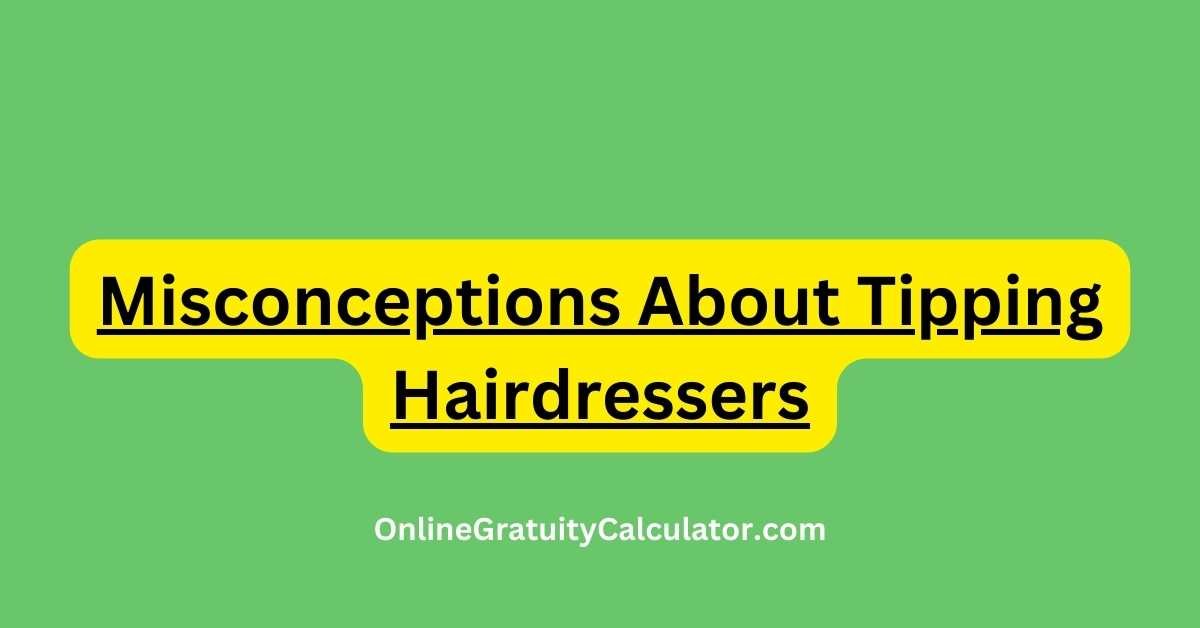Tipping is a common practice in the service industry, including hairdressing. However, there are several misconceptions surrounding hairdressers tipping calculator that can lead to confusion or misunderstandings. In this article, we will address some of the common misconceptions and provide clarity on the appropriate etiquette for tipping hairdressers.
Misconception 1: Hairdressers are already well-paid
It is a common myths that hairdressers are well-compensated for their services, and therefore, tipping is unnecessary. However, hairdressing is a highly skilled profession that requires continuous training and education. Many hairdressers work long hours, including evenings and weekends, to accommodate their clients’ schedules. Tipping is an important way to show appreciation for their expertise and hard work.
Misconception 2: Tipping is only necessary for exceptional service
While tipping is often associated with outstanding service, it is important to note that hairdressers rely on tips as part of their income. Even if the service is satisfactory but not exceptional, it is still customary to tip. Tipping acknowledges the hairdresser’s effort and contributes to their overall compensation.
Misconception 3: The salon owner receives the tip
Another common misconception is that the tip goes directly to the salon owner. In reality, tips are typically given directly to the hairdresser who provided the service. In some cases, salons may have a pooling system where tips are shared among the staff, but it is essential to confirm the salon’s policy to ensure your tip reaches the intended recipient.
Misconception 4: Tipping is only done in cash
In the digital age, cashless transactions have become increasingly common. It is a misconception that tipping can only be done in cash. Many salons now offer electronic payment methods, such as credit cards or mobile payment apps, which allow customers to include a tip as part of their overall payment. It is always best to check with the salon beforehand or inquire about tipping options during the transaction.
Misconception 5: There is a fixed percentage for tipping hairdressers
Unlike some industries where there may be a standard tipping percentage, such as restaurants, there is no fixed percentage for tipping hairdressers. The general guideline is to tip around 15-20% of the total service cost. However, tipping is ultimately discretionary and can be influenced by factors such as the quality of service, complexity of the hairstyle, and personal satisfaction.
Misconception 6: Tipping is not necessary if the salon charges high prices
The price charged by a salon does not negate the need for tipping. The cost of services covers various expenses, such as overhead, equipment, and product costs. Tipping is a separate way to express gratitude for the individual hairdresser’s work and dedication, regardless of the salon’s pricing structure.
Misconception 7: Tipping should only be based on hairdressing services
While the primary service provided by hairdressers is hairstyling, tipping can also extend to other related services. If the hairdresser goes above and beyond, provides exceptional customer service, or offers additional treatments such as scalp massages or hair treatments, it is appropriate to tip accordingly. Tipping can acknowledge the overall experience and the effort put into enhancing the customer’s satisfaction.
Conclusion
Understanding the common misconceptions surrounding tipping hairdressers is crucial for maintaining proper etiquette and appreciation for their skill and dedication. By debunking these misconceptions, we can ensure that hairdressers receive the recognition and compensation they deserve for their professional services. Remember, tipping is a personal choice, but it is always a thoughtful gesture to show gratitude for the hairdresser’s expertise and hard work.
